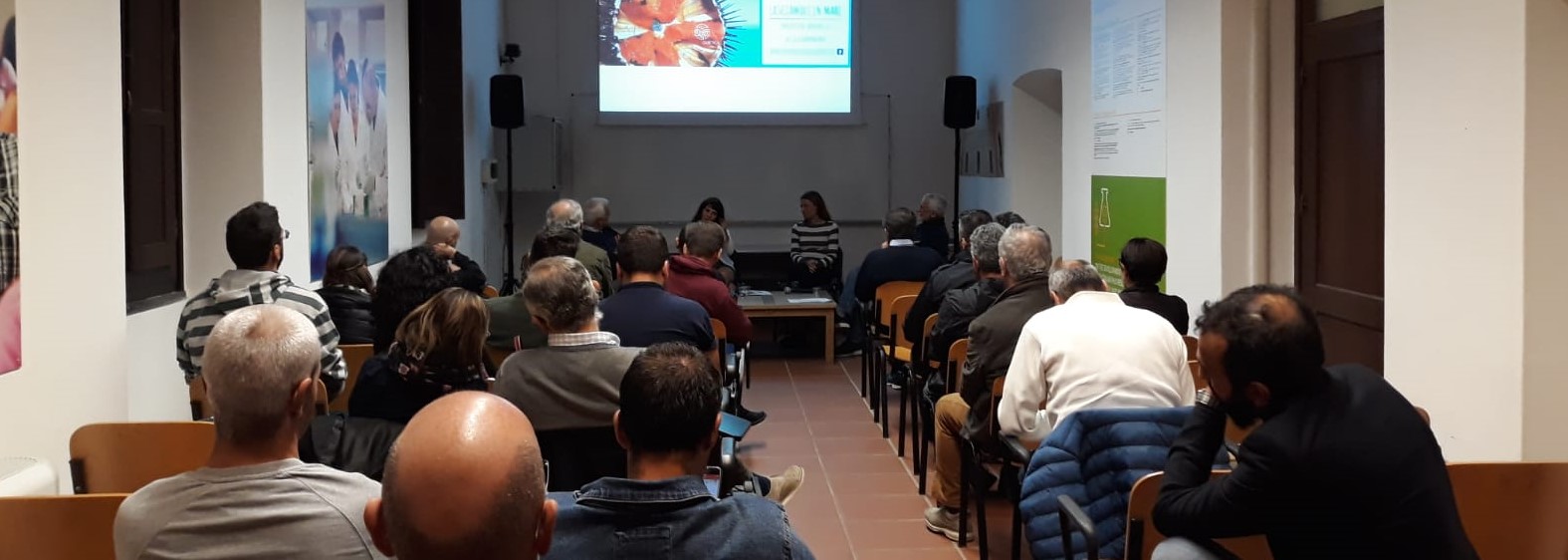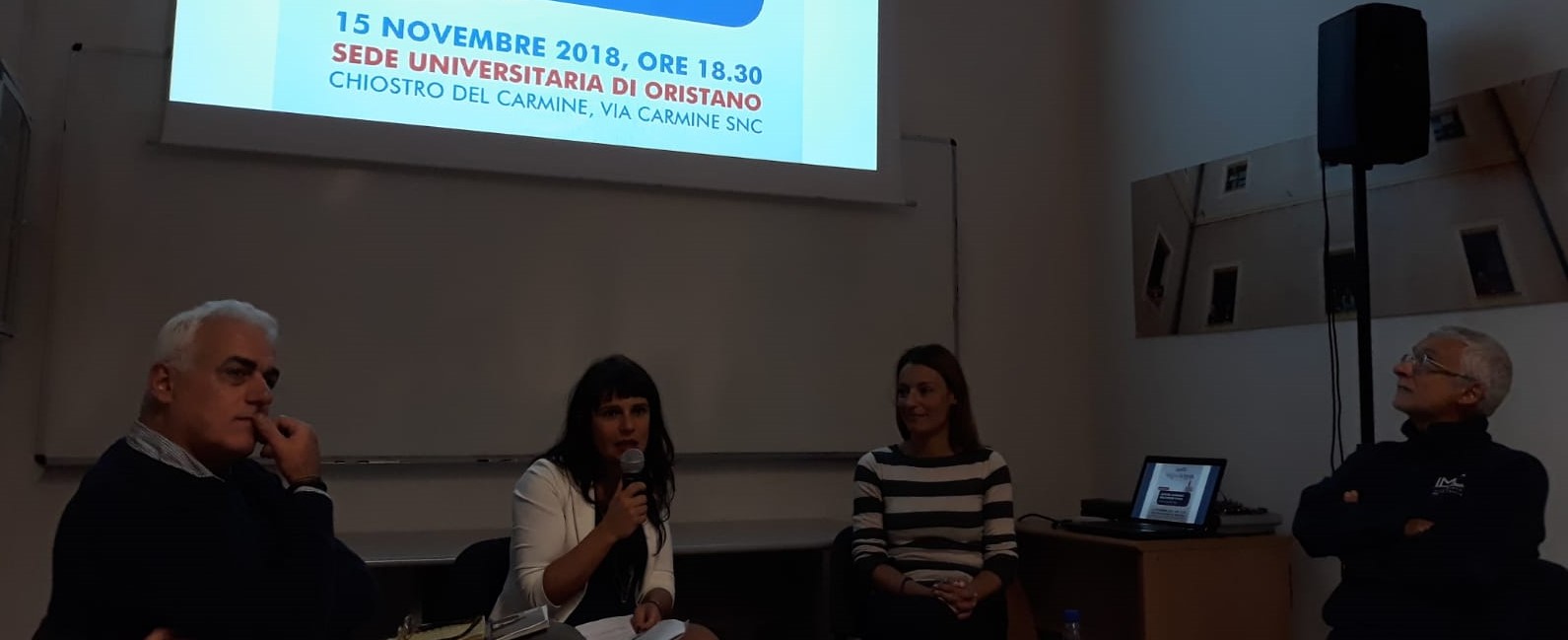A healthy, fishy sea. But to what extent can we benefit from it? The promotion of controlled and sustainable management guarantees (would guarantee) a future for various economic activities such as fishing, aquaculture and tourism. This was discussed at the conference "Sustainable management of fish resources: the sea and wetlands at the table", organized by the Festival of Science in Oristano. A debate that saw the participation of experts from various organizations: for MEDSEA the marine biologist Francesca Frau, the director of FLAG Pescando Sardegna Centro Occidentale, Mauro Tuzzolino, the director of the Foundation IMC Centro Marino Internazionale Onlus Paolo Mossone. The debate was moderated by the sociologist Emanuela Manca of the Environmental Sustainability Service and Information Services of the Department of Environmental Protection of the Region of Sardinia.
MEDSEA brought to the Festival of Science the experience of the Maristanis project, launched just over a year ago in the Oristano compendium and aimed at the protection and enhancement of wetlands and coastal marine ecosystems.
The data on fishing in the lagoon, provided by FLAG Pescando, partner of Maristanis, tell of areas in good health but constantly threatened by the impact of man.
|
Sites |
2015 |
2016 |
2017 |
media |
|
Corru Mannu |
365,73 |
215,40 |
344,68 |
308,60 |
|
Pond of Is Benas |
116,74 |
137,39 |
72,44 |
108,86 |
|
Pond of Marceddì, San Giovanni e Corru S’Ittiri |
113,99 |
28,15 |
255,07 |
132,40 |
|
Pond of S’Ena Arrubia |
46,27 |
64,20 |
82,55 |
64,34 |
|
Pond of Santa Giusta |
9,56 |
51,23 |
15,95 |
25,58 |
|
Pond of Cabras |
210,58 |
135,03 |
89,22 |
144,94 |
|
Total |
139,96 |
89,55 |
118,29 |
115,93 |
Productivity in the sites of the province of Oristano expressed in kg/ha/year.
|
Species |
Percentage |
|
Mullets |
56,07% |
|
Mussels (Mytilus galloprovincialis) |
23,65% |
|
Eels (Anguilla anguilla) |
4,98% |
|
Breams (Sparus aurata) |
4,38% |
|
Basses (Dicentrarchus labrax) |
4,01% |
|
Local clams (Venerupis decussata) |
3,46% |
|
Others |
3,45% |
Species mostly fished in the last 3 years.
The data are indicative but not reliable, also because of the problem of "traceability" within the supply chain.
The ships operating in the Flag marine area are mainly those of the Oristano maritime compartment. There are 297 vessels, of which 17 are used as support boats for professional underwater fishing, 249 for small-scale fishing (artisanal and non-industrial) and 31 that can fish at a distance of more than 12 miles from the coast. Almost all vessels use traps, single nets or slitting nets or longlines.
In its first year of activity, the Maristanis project involved the operators of the sector: 100 fishermen replied to the questionnaire which then allowed to draw up a vulnerability map and evaluate actions to mitigate the impact on the ecosystem, for the protection of endangered species and against illegal trawling.
Francesca Frau, a marine biologist at MEDSEA, spoke about endangered fish species, with particular reference to sea urchins (Paracentrotus lividus) and eels (Anguilla anguilla). She also focused on the strategies implemented within the Maristanis project to combat illegal trawling, to enhance the value of the fish supply chain and to promote sustainable consumption.
To repopulate and protect; to raise awareness among operators and citizens; to restore a correct and respectful relationship between man and the environment: these are the objectives of those who care about the health of our seas.


